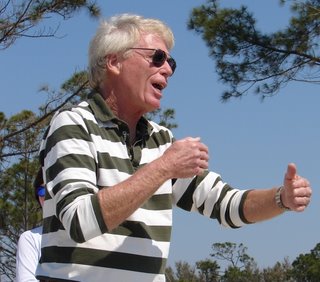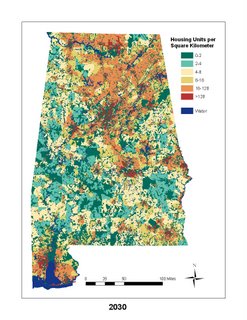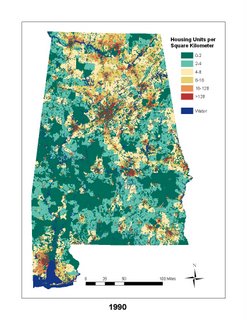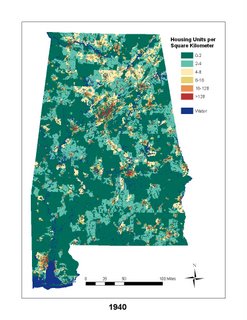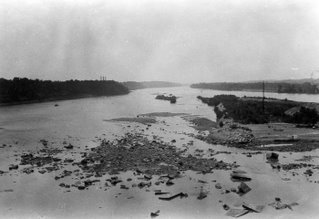Below is the the first installment of "Take 5 with BEN", a question and answer series with Alabama's environmental decisionmakers. Our first interview is with Dr. George Crozier, longtime director of the Dauphin Island Sea Lab.
Best Wishes,
Pat Byington
BEN Publisher
*************************************
"Take 5 with BEN" - Dr. George Crozier
At the end of this month, one of Alabama's most prominent and renown conservationist, Dr. George F. Crozier, Executive Director of the Dauphin Island Sea Lab, will be retiring. Dr. Crozier’s involvement with coastal Alabama began in 1968 as Assistant Director of the University of Alabama’s Marine Science Program. In 1971, the Marine Environmental Sciences Consortium (MESC) was enacted by the Alabama Legislature as a vehicle to promote marine science in the state and to minimize duplication of programs in its consortium universities. In 1972, the MESC moved to the former Air Force Radar Base on Dauphin Island; Crozier became its Chief Scientist, finally becoming Executive Director in 1977.
In the 30 years as Director, Crozier has overseen the expansion of the former military base into a thriving and internationally renowned marine science laboratory. Prominent research scientists engage in interdisciplinary fieldwork, ranging from paleoecology to biogeochemistry, in field sites from the ice shelf of Antarctica to the salt marshes of Dauphin Island.
Educational programs reach kindergarten to Ph.D. students, and in the summer, the Sea Lab becomes the larges residential marine education program in the country, with college classes, workshops for educators, programs for high schools students, and much more.
The Estuarium, the Sea Lab’s public aquarium, is one of the Mobile area’s most visited tourist attractions. Its focus on the Mobile Bay estuary system makes it a unique educational and enriching experience for all ages.
The Coastal Policy Center hosts the Mobile Bay National Estuary Program and advises developers, governmental agencies and other interested parties on the principles of sustainable development and best management practices. As Director of the Sea Lab, Crozier was a member of the Board of Forever Wild, which purchases and preserves in perpetuity valuable natural resources in the state of Alabama.
Crozier has earned a flotilla of accolades in his 30 years as Director, most notably in 1999 as NOAA’s Coastal Steward of the Year and in 2000 as the recipient of the Alabama Academy of Science’s Wright A. Gardner Award.
*********************************
How much has the Mobile/Coastal Area changed over the past 40 years?
I had the good fortune to come to Alabama late in 1968 as the positive impacts of a variety of environmental legislative actions of the early ‘60s began to be evident. The first summer I was here, a professor from the U. of Alabama bringing a class to our facility at Pt. aux Pins ran to the telephone to report a large fish kill that he had observed on the way down from Tuscaloosa.
I missed most of “the bad old days” when untreated paper mill waste was legally discharged into the Mobile River and Bay. The stories were pretty horrific but data was sketchy at best and the Alabama Water Improvement Commission was a creation of the federal Clean Water Act and already resented and resisted by the industrial community but was embraced by municipalities that benefited from the construction of wastewater treatment plants providing secondary treatment (and lots of jobs) to domestic wastewater. Alabama, as a state, provided wider municipal secondary treatment than Boston, MA, the intellectual seat of power in this country – and that may still be true at this moment.
So I have witnessed; and through DISL, documented to some degree, the partial restoration of water quality in Mobile Bay. Unfortunately, my sense of the last decade is that the rate of improvement may have diminished as a result of expanding non-point sources of contamination.
You have accomplished much at the Dauphin Island Sea Lab. Are there any particular accomplishments you are most proud of?
Survival! - of State budget cuts and hurricane impacts. Those are tangible and significant but there are also some unquantifiable achievements. The Laboratory has gradually established a data base on a variety of parameters that can be used as surrogates to approximate the “health” of the Bay. The first and only 24/7 environmental monitoring system has been established an funded through the National estuary program and the Coastal section of the Dept. of Conservation and Natural Resources.
Obviously, the growth and development of the K-12 programs at the Laboratory is a most significant accomplishment. This has genuinely become one of the premier programs in the nation and the state as a whole should be quite proud of that. The Discovery Hall program now coordinates all marine education for the Gulf of Mexico through the Gulf Alliance.
What are some of the biggest challenges facing Alabama's coastal areas?
Poor land use planning throughout the State and watershed is a truly critical challenge. There is no real commitment to management of the land and the history of mismanagement is rooted in the deeply held property rights attitudes of the last century. We continue to convert green space into habitat for cars and low density human population, all contributing to the loss of ecological services normally contributing to and constituting healthy ecosystems.
There is a growing concern for the inputs from atmospheric sources and the ongoing sprawl in both coastal counties has the potential to wipe out the gains of the Clean Water Act and water quality progress of the past 40 years!
Are there any specific environmental initiatives that you believe are needed in the state of Alabama?
There needs to be a movement toward ecosystem/watershed – based management. Within that context I think that the principles of so-called smart growth must be pursued. The demographics are beginning to shift back toward the cities and if transportation oriented development is fostered, we may be in a position to ameliorate the growing energy crisis while restoring an improving trend line of water quality and associated coastal living resources
What are your future plans?
I have a number of familial obligations but I have also signed on with the Bellwether Group, a public relations and environmental consulting firm in Mobile. My wife has made it clear that Wal-Mart is in my future if I don’t supplement my retirement income.
I will ask the new Executive Director to allow me to continue to try to develop the coastal policy initiative that I have been pursuing for the last several years through the Lab. The primary academic thrust is a development of a coastal design center emphasizing landscape ecology, landscape architecture, and coastal engineering and development.
I have good intentions of writing a book on coastal zone management in Alabama and the central Gulf subtitled “How Far Can You Throw a Mullet into a Hurricane?” Whether I have the personal discipline to do that is yet to be seen.


